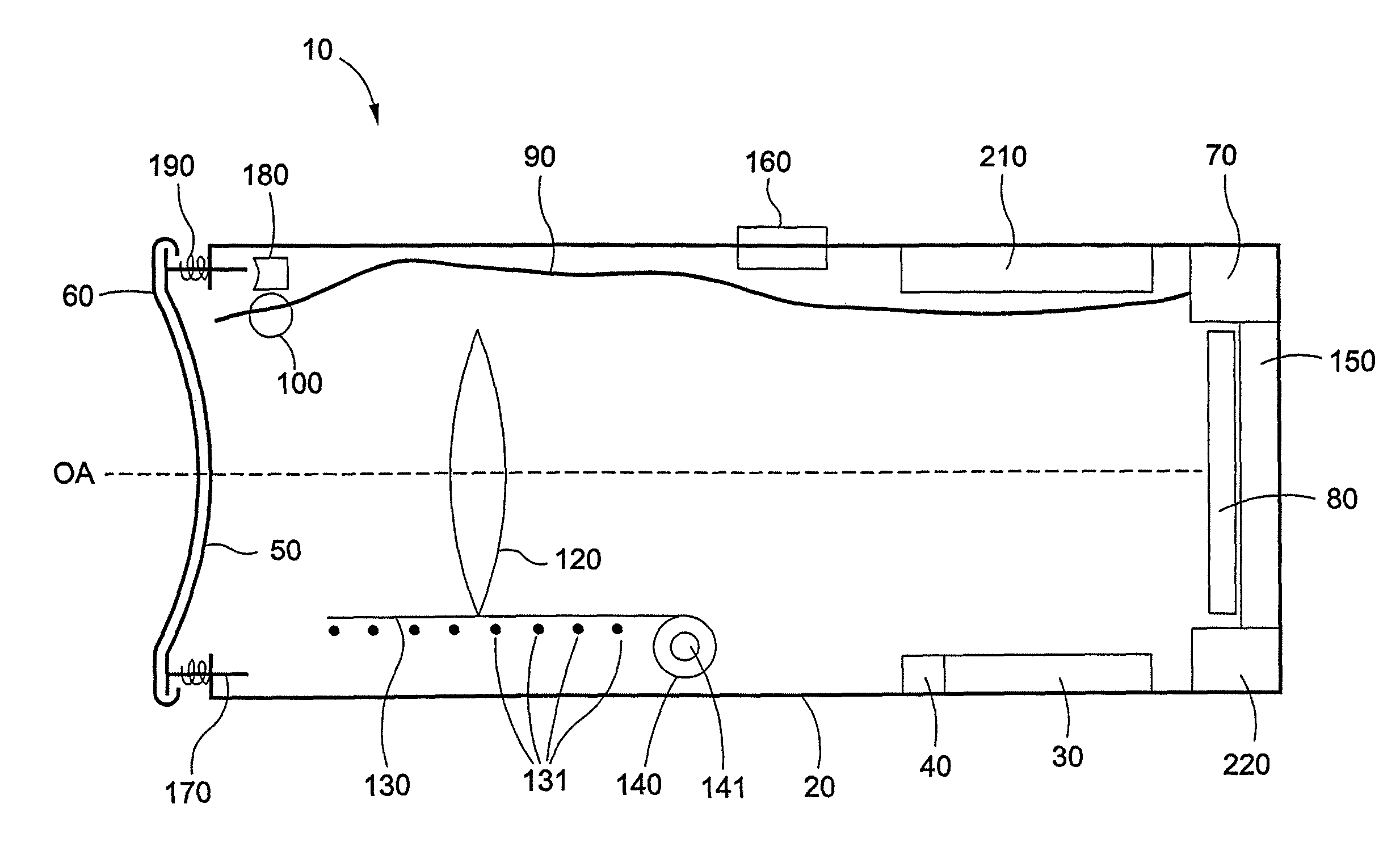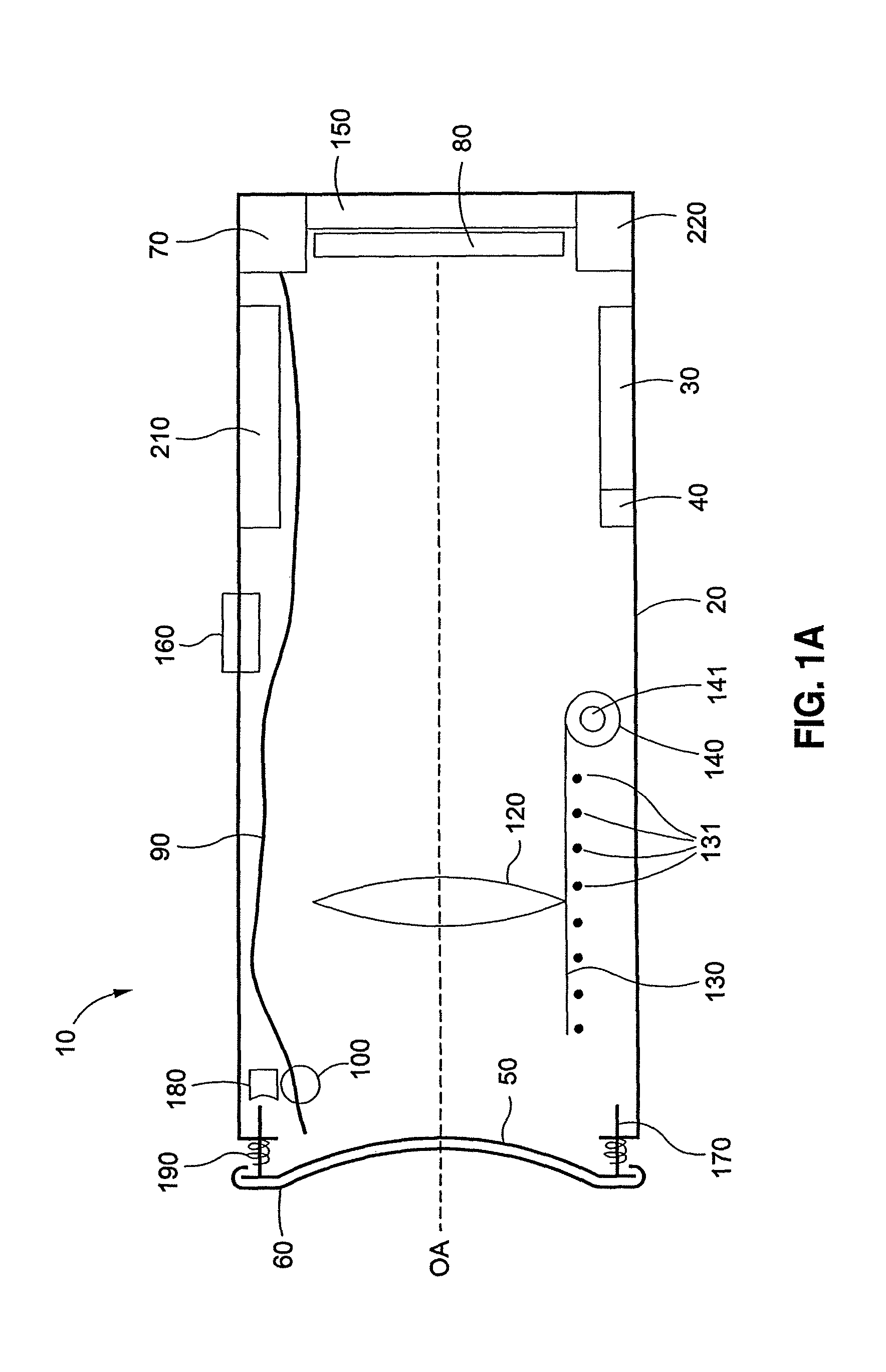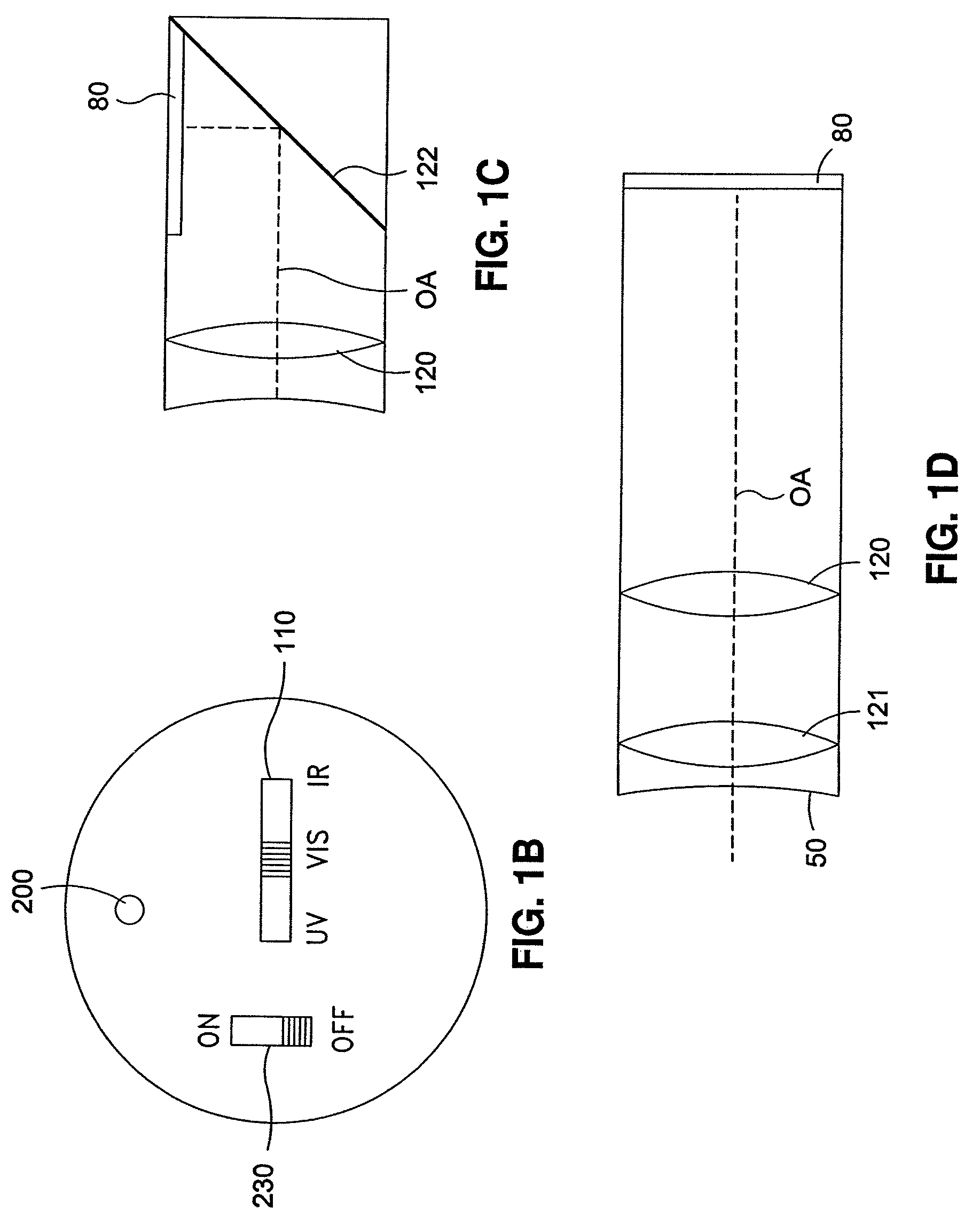Compact ocular fundus camera
a compact, camera technology, applied in the direction of camera focusing arrangement, printers, instruments, etc., can solve the problems of inability to accurately follow up disease progression over a period of time, difficulty in identifying disease processes, and high technical requirements of ophthalmoscopy, so as to achieve the effect of little expertise or training in operation
- Summary
- Abstract
- Description
- Claims
- Application Information
AI Technical Summary
Benefits of technology
Problems solved by technology
Method used
Image
Examples
Embodiment Construction
[0057]Methods and apparatus available for performing examinations of the ocular fundus are either difficult to perform (e.g., ophthalmoscope) or involve expensive, non-portable pieces of equipment (e.g., commercially available fundus camera systems).
[0058]Embodiments of the present disclosure describe a compact ocular fundus camera that can be both easy to use and fully portable. In general terms, the camera will comprise at least a contact surface adapted to contact the cornea of a patient's eye, an illumination source to illuminate the fundus, an image detector that receives an image of the fundus from light reflected back from the eye and outputs an image data file, and an imaging lens, operative to focus light reflected back from the fundus onto the imaging surface of the image detector. The camera will also comprise communication capability, either wired or wireless to permit transmission of image data to at least one peripheral device. In some embodiments, the camera is simple...
PUM
 Login to View More
Login to View More Abstract
Description
Claims
Application Information
 Login to View More
Login to View More - R&D
- Intellectual Property
- Life Sciences
- Materials
- Tech Scout
- Unparalleled Data Quality
- Higher Quality Content
- 60% Fewer Hallucinations
Browse by: Latest US Patents, China's latest patents, Technical Efficacy Thesaurus, Application Domain, Technology Topic, Popular Technical Reports.
© 2025 PatSnap. All rights reserved.Legal|Privacy policy|Modern Slavery Act Transparency Statement|Sitemap|About US| Contact US: help@patsnap.com



